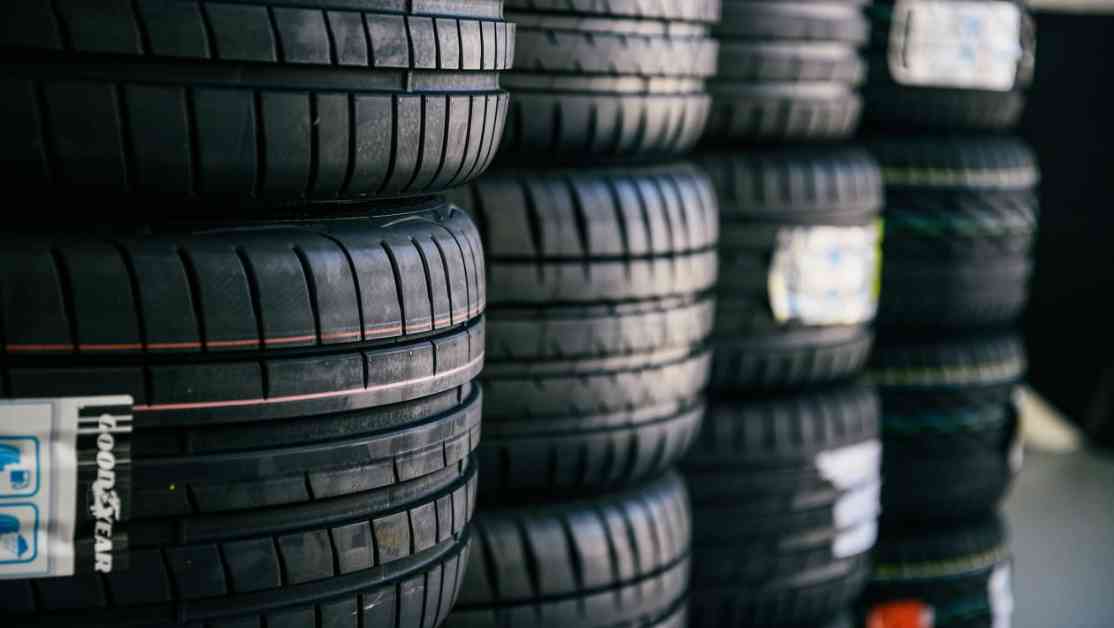EU Regulations Revolutionize Tyre Safety Standards, Resulting in Billions in Savings for Motorists
In a significant development that is set to reshape the way motorists approach tyre maintenance, the European Union has introduced new regulations that will enhance the safety and performance of worn tyres. This groundbreaking change will not only benefit drivers in terms of safety but also lead to substantial cost savings, with estimates suggesting that European motorists could collectively save a staggering £6 billion annually.
The traditional practice of replacing tyres based on age and condition rather than tread depth may soon become a thing of the past, thanks to the EU’s latest move. Under the new regulation, worn tyres must meet the same wet braking standards as new ones, ensuring that motorists can rely on their tyres to deliver optimal performance even as they approach the legal tread depth limit of 1.6mm.
The impetus behind this regulation stems from the realization that a significant number of tyres are replaced prematurely, with data showing that 50% of tyres are discarded before the tread wears below 3mm. By extending the safety and performance standards to worn tyres, the EU aims to not only enhance road safety but also promote sustainability by reducing the demand for new tyres.
The environmental impact of this regulation is equally noteworthy, as it is projected to lead to a reduction in CO2 emissions by 6.6 million tons annually in Europe alone. This reduction in demand for new tyres is expected to translate into a substantial decrease in carbon footprint, with the potential to significantly mitigate the environmental impact of tyre disposal and production.
One of the key implications of the new regulation is the potential for motorists to benefit from improved tyre longevity and reduced frequency of replacements. With fewer tyres being discarded prematurely, drivers can expect to see significant cost savings over the lifespan of their vehicles, making the prospect of compliance with the new standards even more appealing.
Impact on Global Sustainability
While the focus of the new EU regulations is primarily on enhancing tyre safety and performance within Europe, the global implications of this shift in standards are far-reaching. Michelin estimates that globally, 400 million tyres are removed prematurely each year, resulting in excess CO2 production of 35 million tons – equivalent to the emissions from New York over a six-month period.
The adoption of similar regulations in other regions could have a transformative impact on global sustainability efforts, with the potential to significantly reduce greenhouse gas emissions associated with the tyre industry. By standardizing safety and performance requirements for worn tyres, countries worldwide could collectively contribute to a more sustainable future for the automotive sector.
Technological Advancements and Consumer Benefits
The implementation of the new EU regulations represents a major milestone in the evolution of tyre technology, driving manufacturers to innovate and develop products that meet the stringent performance standards set by the authorities. As Brian Porteous, Michelin’s Technical Manager, notes, the new requirements for worn tyres will not compromise other aspects of tyre performance but rather optimize the balance between different attributes to enhance overall safety and longevity.
Consumers stand to benefit significantly from these technological advancements, as they can expect greater consistency in tyre performance throughout the lifespan of their tyres. With the assurance that worn tyres meet the same wet braking standards as new ones, drivers can enjoy enhanced safety on the road while also reaping the financial rewards of reduced tyre replacement costs.
Implications for the UK Market
While the EU regulations are set to have a profound impact on tyre safety and performance standards across Europe, questions remain about their applicability in the UK market. Despite uncertainties about the regulatory alignment post-Brexit, UK consumers purchasing tyres with EU labels can still benefit from the longevity advantages offered by the new standards, provided that the tyres have a four-digit date code confirming their recent production.
The potential implications for the UK tyre market extend beyond regulatory compliance, as consumers may face changes in purchasing costs and product availability as manufacturers adapt to the new standards. However, the overarching goal of enhancing safety and sustainability in the automotive sector remains a shared objective that transcends geographical boundaries.
In conclusion, the introduction of the new EU regulations heralds a new era in tyre safety and performance standards, with the potential to revolutionize the way motorists approach tyre maintenance. By extending safety requirements to worn tyres and promoting sustainability through reduced tyre replacements, the regulations not only benefit drivers in terms of safety and cost savings but also contribute to global efforts towards a more sustainable future. As the automotive industry continues to evolve, consumers can look forward to safer, more efficient, and environmentally friendly driving experiences enabled by cutting-edge tyre technology and regulatory advancements.










